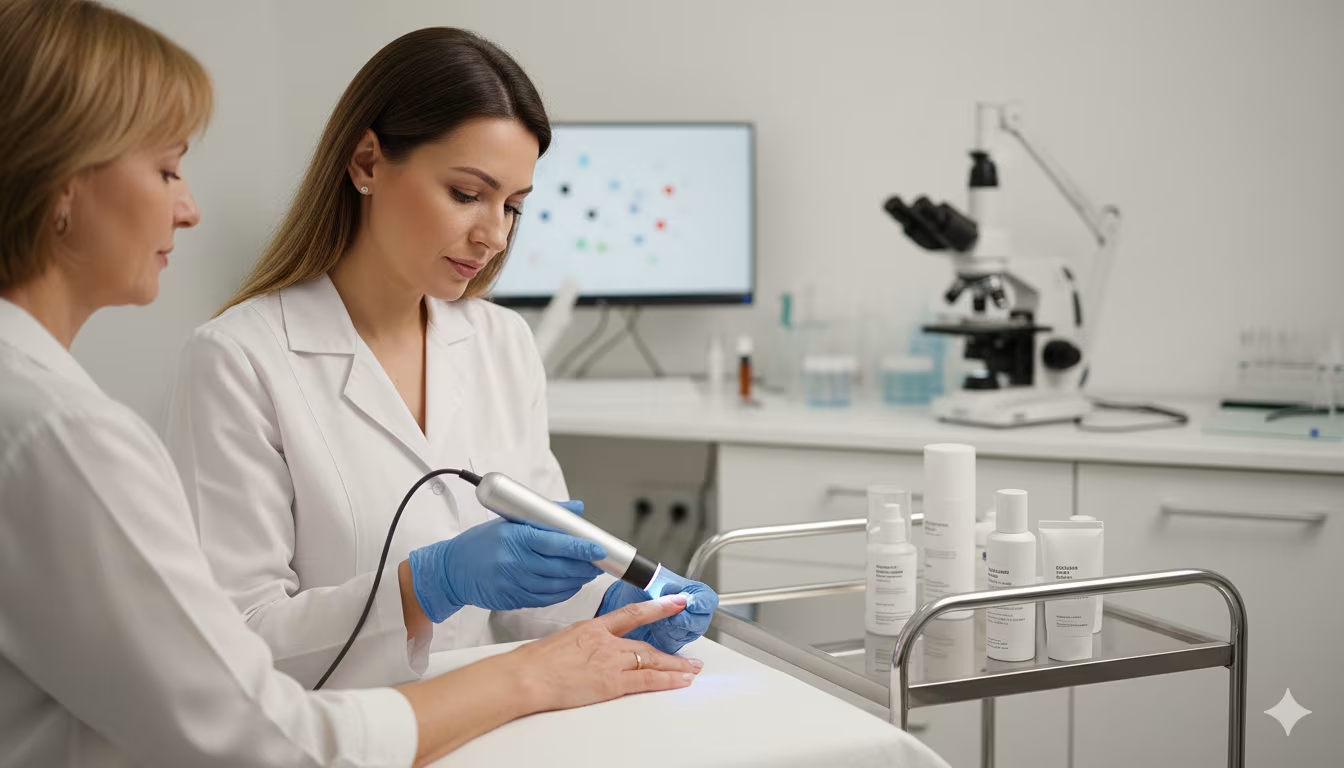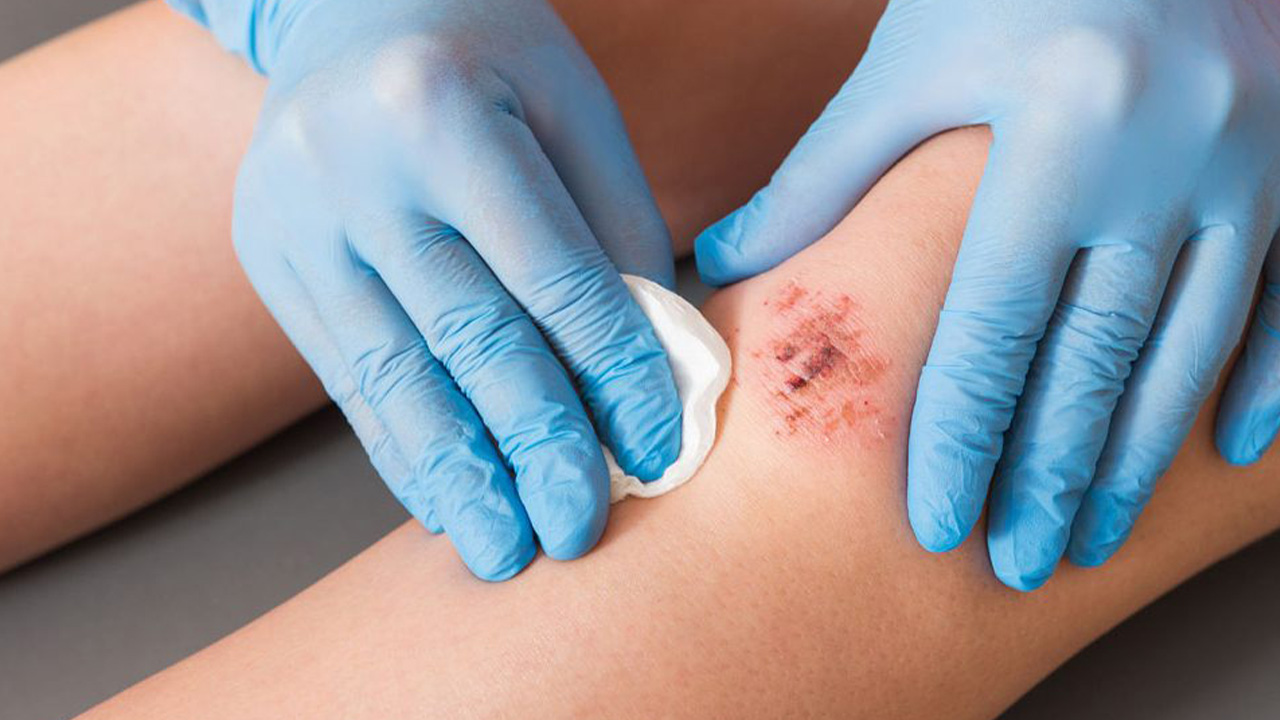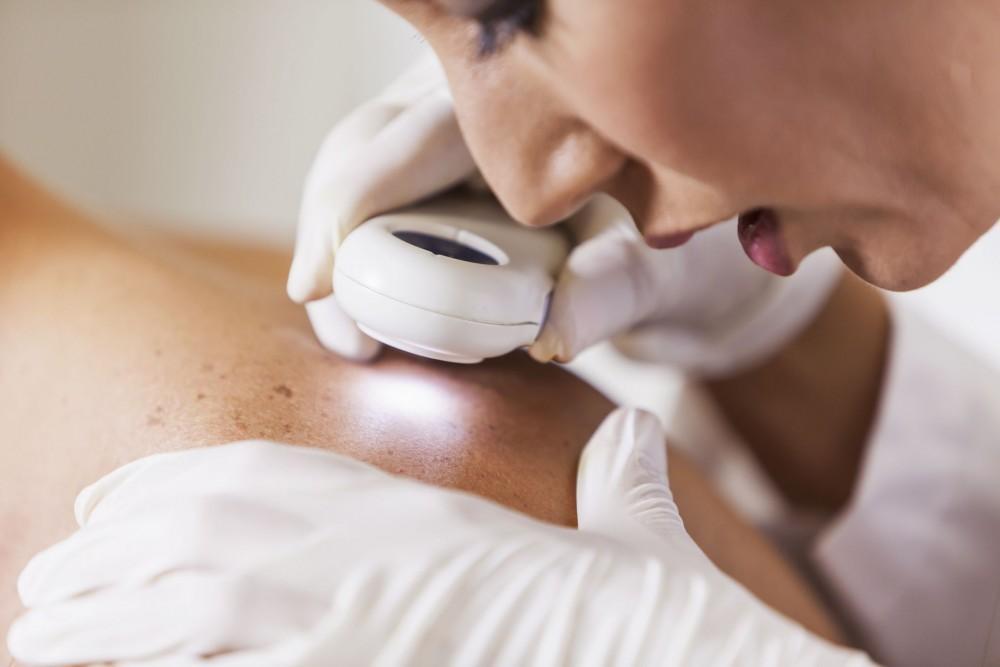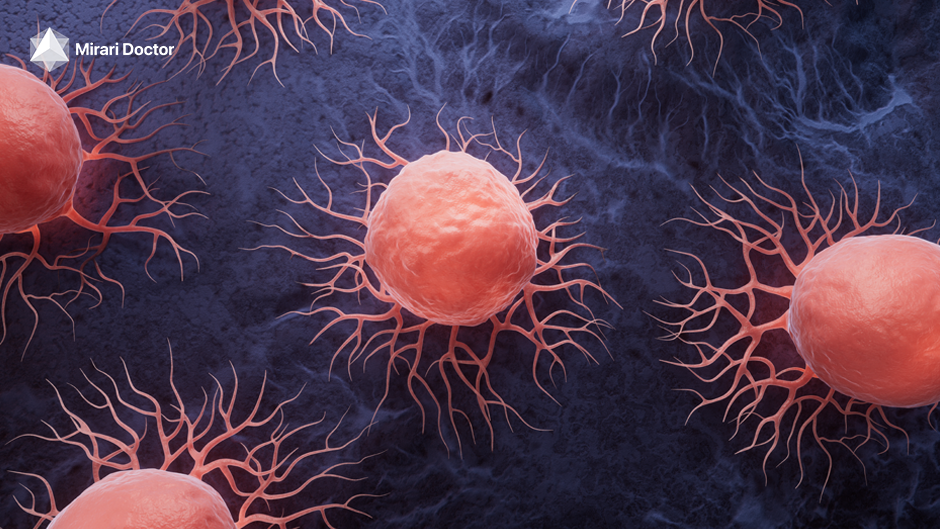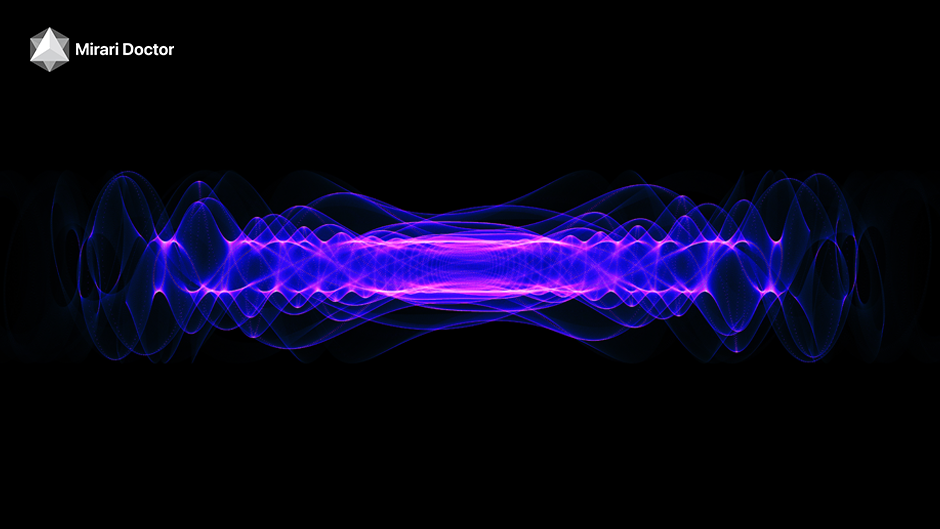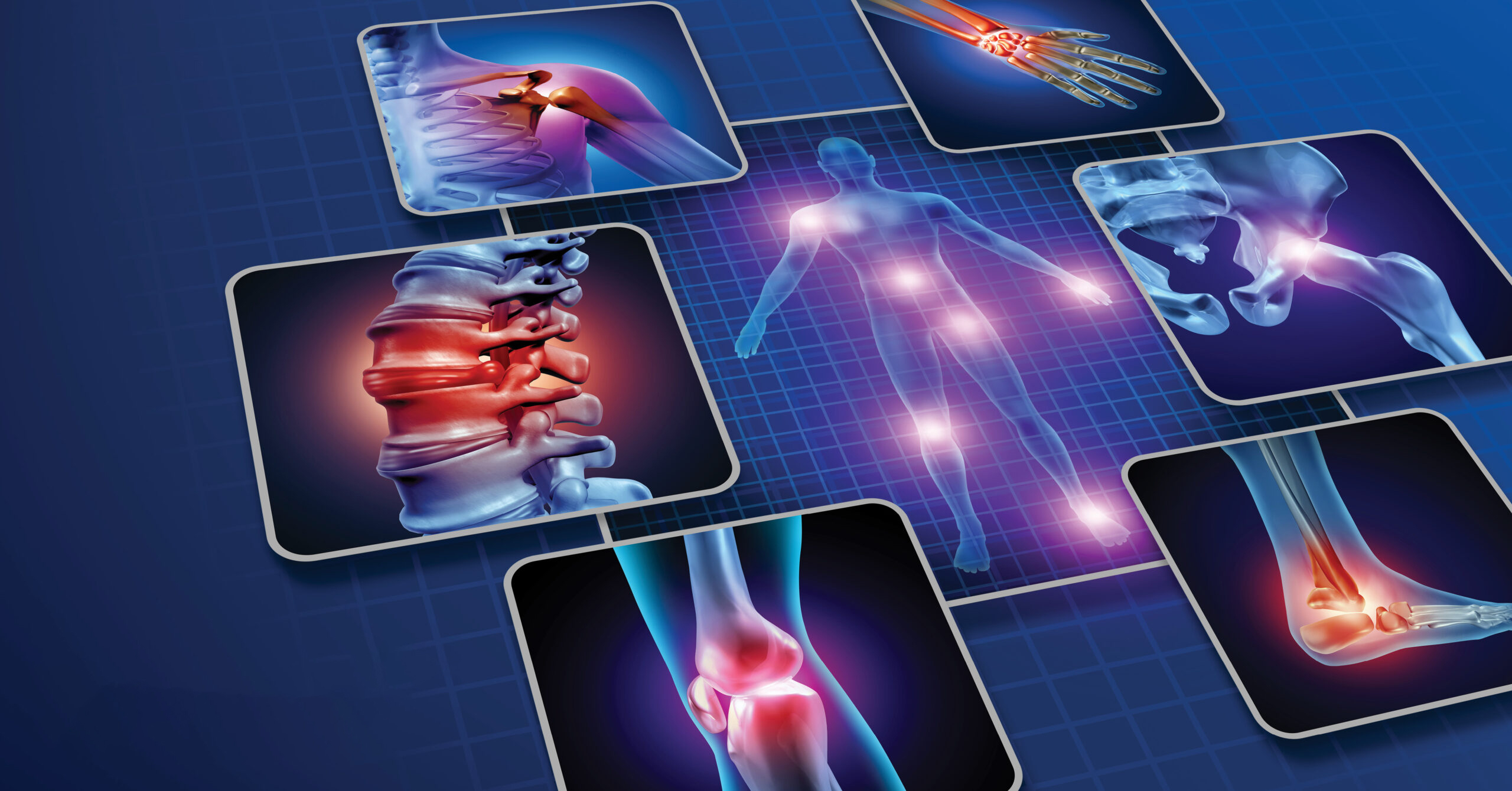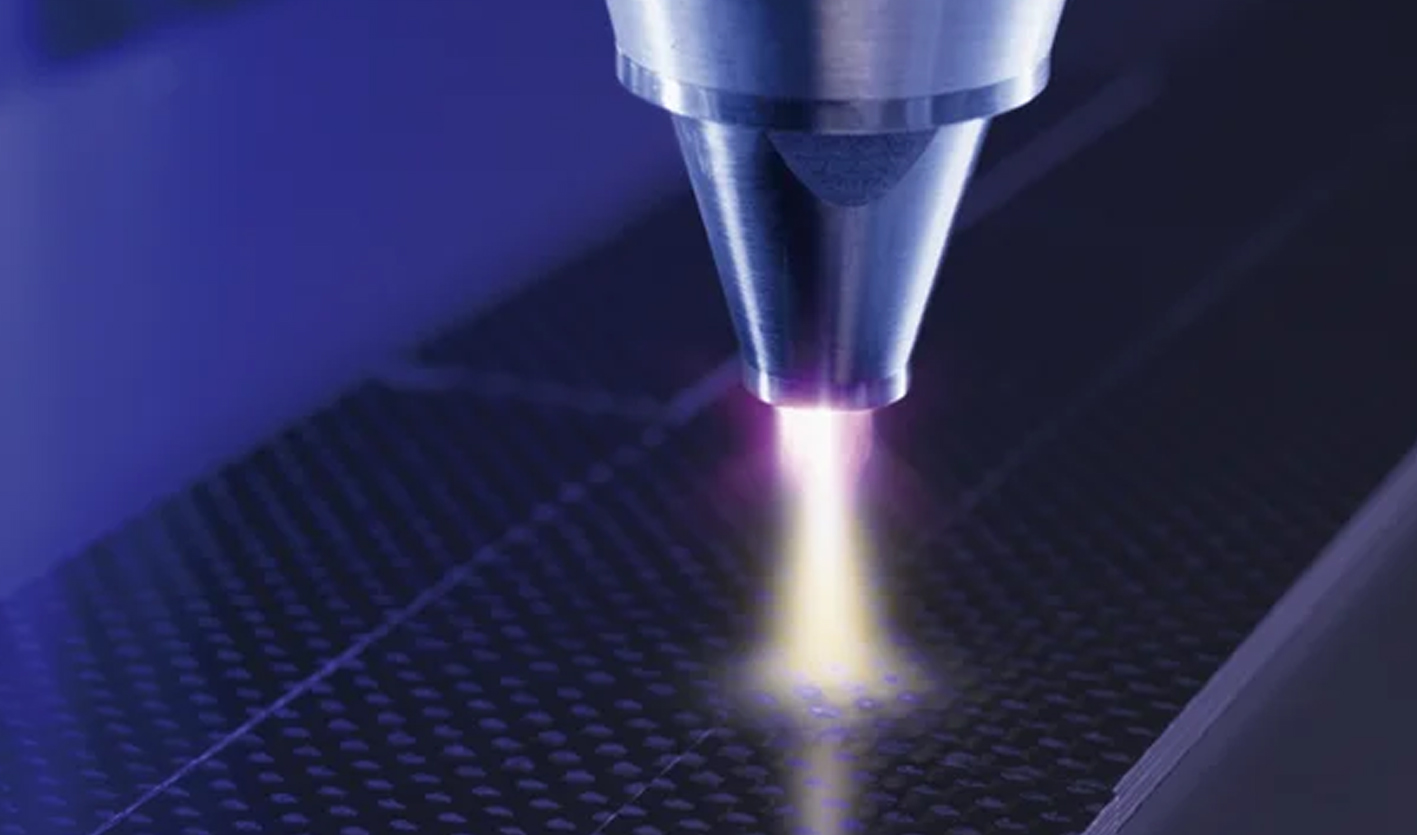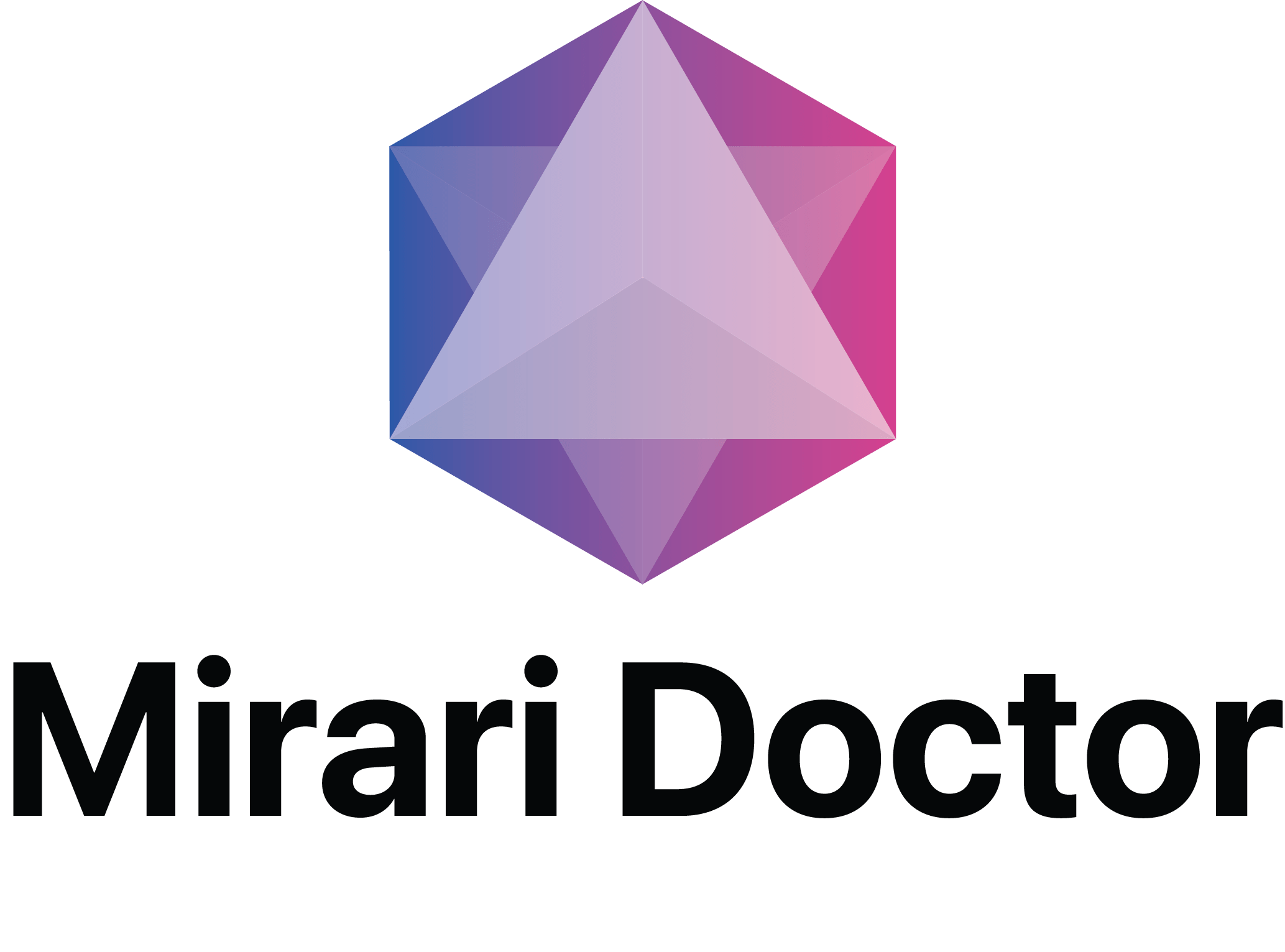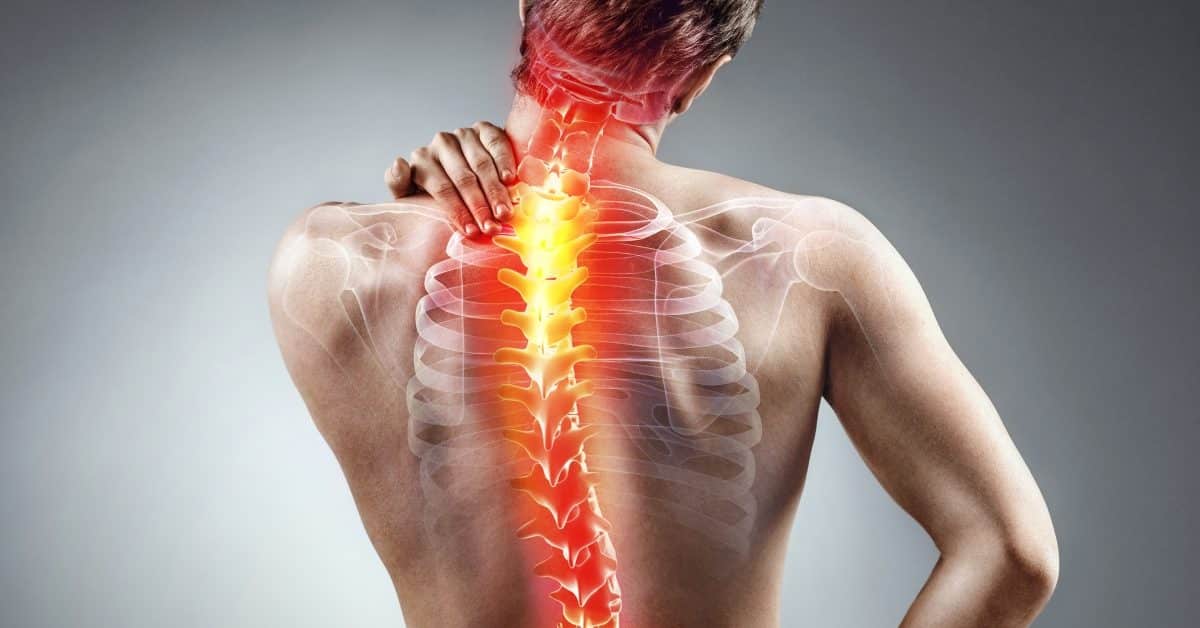
You May Be Interested In:
Back pain affects 80% of adults at some point in their lifetime, making it one of the most common medical complaints worldwide. Most cases of acute back pain resolve within days to six weeks with conservative treatment including over-the-counter medications, gentle exercise, and proper posture. However, approximately 20% of acute back pain cases progress to chronic pain requiring comprehensive management strategies[1][2]. This guide provides evidence-based information on causes, diagnosis, treatment options—including emerging therapies like cold plasma—and prevention strategies to help patients and caregivers navigate back pain management effectively.
Understanding Back Pain: Types, Symptoms, and Impact
What is back pain?
Back pain refers to discomfort or pain anywhere along the spine from the neck (cervical region) to the tailbone (sacrum). The condition represents a leading cause of missed work days and disability worldwide, creating substantial economic burden through medical costs and lost productivity[1]. In the United States alone, back pain generates billions of dollars in annual healthcare expenditures and indirect costs from reduced work capacity.
The spine consists of vertebrae separated by intervertebral discs, supported by ligaments, muscles, and nerves. Pain can originate from any of these structures due to injury, degeneration, inflammation, or underlying medical conditions. Understanding the type, location, and characteristics of back pain helps guide appropriate treatment approaches.
Types of back pain by duration
- Acute back pain lasts from several days to six weeks and typically resolves with minimal intervention. Most acute episodes are self-limiting, improving with basic home care and over-the-counter pain medications[2].
- Subacute back pain persists between 6-12 weeks despite initial treatment attempts. This transitional phase requires more active management to prevent progression to chronic pain.
- Chronic back pain continues beyond 12 weeks, affecting approximately 20% of individuals who experience acute back pain. Chronic pain often requires multidisciplinary care addressing physical, psychological, and social factors contributing to persistent symptoms[3].
- Recurrent back pain involves episodic flare-ups alternating with pain-free intervals. Identifying triggers and implementing preventive strategies helps reduce recurrence frequency and severity.
Back pain by location and symptoms
- Lower back pain (lumbar region) represents the most common type, presenting as dull aching or sharp stabbing sensations. The lumbar spine bears substantial weight and stress during daily activities, making it vulnerable to strain and injury.
- Upper back pain (thoracic region) often relates to poor posture, muscle strain from prolonged sitting, or repetitive movements. Less common than lumbar pain, thoracic discomfort may indicate structural issues requiring evaluation.
- Mid back pain occurs less frequently but warrants attention when present, as it may signal underlying spinal abnormalities or referred pain from internal organs.
Pain patterns vary significantly:
- Localized pain: confined to a specific area without radiation
- Radiating pain: extends into buttocks, legs, or arms (sciatica when affecting sciatic nerve)
- One-sided pain: unilateral symptoms suggesting specific structure involvement
- Bilateral pain: affecting both sides, potentially indicating systemic issues
Associated symptoms include stiffness (especially morning or after inactivity), muscle spasms, numbness or tingling in extremities, and weakness affecting mobility[2].
When back pain becomes a medical emergency
Certain warning signs require immediate medical evaluation:
- Sharp, sudden severe pain rather than gradual dull ache
- Radiating pain down legs accompanied by progressive weakness (cauda equina syndrome risk)
- Loss of bowel or bladder control (incontinence)
- Pain accompanied by fever, unexplained weight loss, or personal history of cancer
- Numbness in saddle area (groin, inner thighs, rectum)
- Pain following significant trauma or fall, especially in older adults with osteoporosis
These “red flag” symptoms may indicate serious underlying conditions requiring urgent intervention to prevent permanent neurological damage[4].
Common Causes of Back Pain
Mechanical and structural causes
The majority of back pain stems from mechanical issues affecting spinal structures:
- Muscle strains and ligament sprains: result from improper lifting, sudden awkward movements, or overstretching supporting tissues
- Herniated or bulging discs: occur when soft inner disc material protrudes through outer layer, potentially compressing adjacent nerves
- Degenerative disc disease: natural aging process causing disc height loss, reduced cushioning, and increased spinal stress
- Spinal stenosis: narrowing of spinal canal compressing nerves and spinal cord
- Osteoarthritis: degenerative joint disease affecting facet joints connecting vertebrae
- Scoliosis: abnormal lateral spinal curvature creating uneven loading and muscle imbalances
- Vertebral compression fractures: typically from osteoporosis causing vertebral collapse[1][2]
Lower back pain causes (specific)
- Sciatica involves sciatic nerve compression causing pain radiating from lower back through buttock into leg, often accompanied by numbness, tingling, or weakness below the knee.
- Sacroiliac joint dysfunction affects the joint connecting spine to pelvis, causing lower back and buttock pain that may mimic sciatica.
- Muscle imbalances between core, hip, and back muscles create compensatory patterns leading to strain and pain.
- Piriformis syndrome occurs when the piriformis muscle in the buttock compresses the sciatic nerve, mimicking disc-related sciatica.
- Spondylolisthesis involves one vertebra slipping forward over the vertebra below, potentially narrowing the spinal canal and compressing nerves.
For comprehensive information on managing related musculoskeletal conditions, see our guide on soft tissue injury treatment approaches.
What causes lower back pain in females
Women experience unique causes of lower back pain:
- Pregnancy creates multiple risk factors including weight gain (increasing spinal load), postural changes (exaggerated lumbar curve), and hormonal effects on ligament laxity (relaxin hormone).
- Menstruation may cause referred pain from uterine cramping radiating to the lower back.
- Endometriosis involves pelvic inflammation from endometrial tissue growth outside the uterus, frequently causing chronic back pain.
- Ovarian cysts or pelvic inflammatory disease can produce referred lower back discomfort.
- Urinary tract infections and kidney problems occur more frequently in women and may present with back pain as a prominent symptom.
- Postpartum muscle weakness and pelvic floor dysfunction contribute to persistent back pain after childbirth[2].
Lifestyle and occupational risk factors
| Risk Factor | Mechanism | Prevention Strategy |
|---|---|---|
| Poor posture | Increased spinal stress, muscle fatigue | Ergonomic setup, posture awareness |
| Sedentary lifestyle | Weak core/back muscles, flexibility loss | Regular exercise, movement breaks |
| Obesity | Excessive mechanical load on spine | Weight management, dietary changes |
| Smoking | Reduced spinal blood flow, impaired healing | Smoking cessation programs |
| Heavy lifting | Acute strain, cumulative microtrauma | Proper technique, mechanical aids |
| Psychological stress | Muscle tension, pain amplification | Stress management, relaxation techniques |
Occupational groups at highest risk include truck drivers (prolonged sitting with vibration), nurses and healthcare workers (patient handling), and construction workers (repetitive heavy lifting)[3].
Medical conditions causing back pain
Several medical conditions manifest with back pain as a prominent symptom:
- Inflammatory conditions like ankylosing spondylitis and rheumatoid arthritis cause chronic inflammation affecting spinal joints and surrounding tissues. For information on inflammatory joint conditions, visit our rheumatoid arthritis resource page.
- Infections including spinal osteomyelitis (bone infection), discitis (disc infection), and epidural abscess require prompt diagnosis and aggressive treatment.
- Tumors may be primary spinal cancers or metastatic disease spreading from other organs (lung, breast, prostate, kidney).
- Referred pain originates from internal organs but manifests as back pain—kidney stones, gallbladder disease, pancreatitis, and abdominal aortic aneurysm can all present this way.
- Fibromyalgia involves widespread chronic pain including back discomfort, often accompanied by fatigue and sleep disturbances[1].
Diagnosis: How Doctors Identify Back Pain Causes
Medical history and physical examination
Comprehensive evaluation begins with detailed pain characterization including onset (sudden vs. gradual), duration, intensity using the Visual Analog Scale (VAS 0-10), and quality (sharp, dull, burning). Location mapping distinguishes lower left back pain, lower right back pain, and central patterns[4].
Physicians assess aggravating factors (bending, lifting, prolonged sitting) and relieving factors (rest, position changes, medications). Neurological examination tests reflexes, muscle strength, and sensation to identify nerve involvement. Range of motion assessment evaluates spinal flexibility and postural abnormalities.
Red flag screening checks for serious underlying conditions requiring urgent intervention, including infection, cancer, fracture, or cauda equina syndrome.
Diagnostic imaging and tests
- X-rays provide initial assessment identifying fractures, arthritis, and alignment problems but cannot visualize soft tissues like discs and nerves.
- MRI scans offer detailed views of soft tissues including discs, nerves, ligaments, and spinal cord—the gold standard for evaluating disc herniation and spinal stenosis.
- CT scans deliver superior bone detail useful for complex fractures and structural abnormalities, often combined with myelography for nerve visualization.
- Bone density testing (DEXA scan) screens for osteoporosis in patients at risk for compression fractures.
- Blood tests detect inflammatory markers (ESR, CRP), infection indicators (white blood cell count), and cancer screening markers when indicated.
- Electromyography (EMG) and nerve conduction studies assess nerve and muscle function, helping differentiate nerve root compression from peripheral nerve problems[2].
ICD-10 coding for back pain
Accurate diagnostic coding ensures proper insurance billing and treatment authorization:
- ICD-10 code for low back pain: M54.5
- ICD-10 code for back pain (general): M54.9
- Chronic back pain ICD-10: M54.50 with documentation specifying chronic nature
- Sciatica: M54.3 (right) or M54.4 (left)
- Lumbago with sciatica: M54.40-M54.42
Specific coding facilitates tracking outcomes, research, and healthcare quality metrics while ensuring appropriate reimbursement for services rendered[5].
Back Pain Relief: Conservative Treatment Options
Over-the-counter pain medications
- NSAIDs (nonsteroidal anti-inflammatory drugs) like ibuprofen (Advil, Motrin) and naproxen (Aleve) reduce both pain and inflammation. Recommended dosages are ibuprofen 400-600mg every 6-8 hours or naproxen 220-440mg twice daily with food.
- Acetaminophen (Tylenol) provides pain relief without anti-inflammatory effects, suitable for patients who cannot tolerate NSAIDs. Standard dosing is 325-650mg every 4-6 hours, maximum 3,000mg daily.
- Topical analgesics including lidocaine patches, capsaicin cream, and diclofenac gel offer localized pain relief without systemic side effects.
- Ice vs. heat therapy: ice reduces acute inflammation during first 48-72 hours; heat relaxes muscles and improves circulation for chronic pain or after initial inflammation subsides.
Combination therapy optimizing multiple modalities often provides superior pain management compared to single interventions[3].
Prescription medications
| Medication Class | Examples | Primary Use | Considerations |
|---|---|---|---|
| Muscle relaxants | Cyclobenzaprine, methocarbamol | Acute muscle spasms | Sedating, short-term use |
| Antidepressants | Duloxetine, amitriptyline | Chronic neuropathic pain | Takes 2-4 weeks for effect |
| Anticonvulsants | Gabapentin, pregabalin | Nerve pain (sciatica) | Dose titration needed |
| Opioids | Oxycodone, hydrocodone | Severe acute pain only | High addiction risk, short-term |
| Novel agents | Suzetrigine (Journavx) | Acute moderate-severe pain | FDA-approved 2025, non-opioid |
Corticosteroid injections deliver targeted anti-inflammatory medication directly to affected areas—epidural injections for nerve root inflammation, facet joint injections for arthritis pain[6].
Physical therapy and exercise programs
Evidence-based exercise programs form the cornerstone of back pain treatment and prevention. For detailed exercises and treatment protocols, explore our comprehensive back pain management resources.
Core stabilization exercises:
- Planks (front and side): build trunk stability
- Bridges: strengthen glutes and lower back
- Bird dogs: improve coordination and balance
- Dead bugs: activate deep core muscles
Stretches for lower back pain:
- Knee-to-chest stretch: reduces lumbar compression
- Piriformis stretch: relieves sciatic nerve pressure
- Hamstring stretch: reduces posterior chain tightness
- Cat-Cow stretch: improves spinal mobility
- Child’s Pose: gentle lumbar flexion and relaxation
Physical therapy protocols combine manual therapy (hands-on techniques), therapeutic exercise (progressive strengthening), and patient education. Consistent daily exercise routines yield better outcomes than sporadic intensive sessions[7].
Manual therapies and complementary treatments
- Chiropractic adjustments restore proper spinal alignment through controlled force applied to restricted joints.
- Osteopathic manipulation addresses musculoskeletal dysfunction using various hands-on techniques.
- Massage therapy releases muscle tension, improves circulation, and addresses trigger points contributing to pain.
- Acupuncture modulates pain perception and reduces inflammation through traditional Chinese medicine needle placement at specific body points.
- Low-level laser therapy (cold laser) has FDA clearance for lower back pain treatment, using specific light wavelengths to stimulate cellular healing.
- TENS units (transcutaneous electrical nerve stimulation) provide drug-free pain relief through electrical impulses blocking pain signals[3].
Self-care strategies and home remedies
Lower back pain self-care emphasizes balanced activity—avoid prolonged bed rest (weakens muscles) but respect pain limits. Maintain proper posture during sitting (lumbar support, feet flat), standing (weight distributed evenly), and lifting (bend knees, not back).
- Ergonomic workplace setup includes monitor at eye level, keyboard at elbow height, chair with lumbar support, and frequent position changes.
- How to sleep with lower back pain: back sleepers benefit from pillow under knees reducing lumbar curve; side sleepers need pillow between knees maintaining hip/spine alignment; avoid stomach sleeping when possible.
- Heating pads for back pain relax muscles and improve blood flow—use 15-20 minutes several times daily.
Weight management reduces mechanical spinal stress; smoking cessation improves disc nutrition and healing capacity. Stress management through meditation, mindfulness, or cognitive behavioral therapy addresses psychological pain amplification[2].
Advanced and Innovative Back Pain Treatments
Cold plasma therapy for back pain (emerging)
Cold atmospheric plasma represents an innovative approach to pain management with multiple therapeutic mechanisms. One pioneering device in this field is the Mirari Cold Plasma, developed by General Vibronics and commercialized by [Mirari Doctor]. Unlike traditional approaches, it harnesses controlled ionized gas at room temperature for safe, non-thermal treatment of musculoskeletal pain and tissue regeneration.
- Anti-inflammatory effects: Cold plasma reduces pro-inflammatory cytokines (TNF-α, IL-6, IL-1β) by 40-60% within 72 hours, helping move chronic pain out of persistent inflammatory states[8].
- Muscle relaxation: The therapy relieves tension and spasms in paraspinal muscles through thermal and non-thermal effects. Animal studies and veterinary applications demonstrate muscle “decramping” and tissue relaxation responses.
- Nerve tissue modulation: Cold plasma calms inflamed nerves in conditions like sciatica and radiculopathy, potentially protecting and promoting recovery of damaged peripheral nerves.
- Accelerated tissue regeneration: Promotes healing of tendons, ligaments, and cartilage by stimulating fibroblast activity and growth factor production, addressing degenerative conditions like disc disease.
Treatment parameters typically involve 15-minute sessions, 2-3 times weekly, with the non-invasive topical application using ionized gas maintained below 43°C to prevent thermal tissue damage.
- Important distinction: Cold plasma therapy differs fundamentally from platelet-rich plasma (PRP) therapy. Cold plasma uses ionized gas for inflammation reduction and tissue regeneration, while PRP injects concentrated platelets from the patient’s own blood. Both show promise but work through entirely different mechanisms[8].
Minimally invasive procedures
- Radiofrequency cold plasma nucleoplasty (coblation) treats herniated discs through minimally invasive approach. The procedure generates a cold plasma field using specialized radiofrequency bipolar electrode to decompress disc tissue, relieving nerve root pressure. Key advantage: minimal heat generation avoids surrounding tissue damage. Clinical studies show pain reduction from VAS 7.9 to 1.3 at six months post-procedure.
- Epidural steroid injections deliver corticosteroids directly into epidural space surrounding inflamed nerve roots, providing targeted anti-inflammatory relief.
- Radiofrequency ablation uses heat to interrupt pain signals from facet joints, offering 6-12 months of relief.
- Intracept Procedure received FDA approval for chronic low back pain—targets basivertebral nerve within vertebral bodies using radiofrequency energy.
- Spinal cord stimulation (FDA-approved WaveWriter SCS system) implants device delivering electrical pulses masking pain signals for non-surgical back pain management[6].
Regenerative medicine approaches
- Platelet-rich plasma (PRP) injections use patient’s own concentrated platelets to promote tissue repair and reduce inflammation in damaged discs and ligaments. The concentrated growth factors stimulate natural healing processes, potentially providing long-lasting pain relief through tissue regeneration rather than symptom masking.
- Stem cell therapy for degenerative disc disease remains largely investigational in the United States, with ongoing clinical trials evaluating safety and efficacy.
- Prolotherapy involves injecting irritant solutions (typically dextrose) into weakened ligaments and tendons, triggering controlled inflammation and subsequent healing response with tissue strengthening.
For patients interested in comprehensive pain management approaches, our chronic pain resource provides additional treatment strategies[8].
Digital health and innovative technologies
- Virtual reality therapy: The FDA-authorized RelieVRx system for chronic lower back pain delivers 56 sequential sessions building pain management skills through cognitive behavioral therapy, body awareness training, and relaxation techniques. Patients complete 6-minute daily sessions using VR headset, with clinical trials showing high satisfaction and meaningful pain reduction.
- Wearable back braces provide external support during acute flare-ups, though prolonged use may weaken supporting muscles—use judiciously as recommended by healthcare providers.
- Telemedicine consultation expands access to specialist evaluation and remote physical therapy monitoring, particularly valuable for rural or underserved populations.
- AI-powered treatment optimization analyzes patient data predicting treatment responses and personalizing care plans based on clinical algorithms and machine learning[6].
Surgical interventions (when conservative treatment fails)
Surgery becomes appropriate when:
- Severe neurological deficits (progressive weakness, bowel/bladder dysfunction)
- Intractable pain despite 6+ months comprehensive conservative treatment
- Structural instability threatening spinal cord
- Confirmed structural pathology (large disc herniation, severe stenosis)
- Microdiscectomy removes herniated disc material compressing nerves—success rates 85-90% for appropriate candidates.
- Laminectomy removes lamina (back of vertebra) decompressing spinal canal in stenosis patients.
- Spinal fusion permanently connects vertebrae addressing instability or severe degeneration—longer recovery but provides stability.
- Artificial disc replacement preserves motion compared to fusion, appropriate for younger patients with single-level disc disease.
Recovery timelines vary: minimally invasive procedures (2-4 weeks), fusion surgeries (3-6 months). Risks include infection, nerve damage, failed back surgery syndrome, and adjacent segment degeneration[4].
Choosing the Right Mattress and Sleep Setup
Best mattress for back pain: key features
- Medium-firm mattresses provide optimal balance—firm enough to maintain spinal alignment, yet cushioned for pressure point relief. Research suggests medium-firm consistently outperforms very firm or very soft mattresses for back pain sufferers.
- Hybrid mattresses combine memory foam comfort layers with innerspring coil support systems, offering conforming pressure relief plus responsive support.
- Individually wrapped coils (pocketed coils) provide targeted support responding independently to body contours, reducing motion transfer between sleep partners.
- Pressure relief materials including adaptive memory foam and natural latex distribute weight evenly, reducing pressure points at shoulders and hips.
- Temperature regulation features like cooling gel-infused foams, breathable covers, and airflow-promoting designs prevent uncomfortable heat buildup during sleep.
Top-rated mattresses for back pain 2025
Based on expert testing and consumer reviews:
- Nectar Premier Hybrid: best overall for back pain relief with balanced support and pressure relief across sleeping positions.
- Saatva Classic: innerspring construction provides excellent support with luxury pillow-top comfort for all sleeping styles.
- DreamCloud: hybrid design delivers exceptional spinal alignment support with plush comfort layers.
- Purple Mattress: unique gel-polymer grid technology offers responsive pressure relief adapting to body shape.
Considerations vary by body weight (heavier individuals need firmer support) and sleeping position (side sleepers need more cushioning than back sleepers).
Mattress toppers and accessories
- Best mattress topper for back pain: 2-4 inch memory foam or latex toppers modify existing mattress feel—memory foam offers contouring, latex provides responsive support with cooling properties.
- Supportive pillows maintain neutral neck alignment—cervical pillows for neck support, lumbar pillows for lower back support while seated.
- Adjustable bed bases enable customized positioning—elevating head reduces snoring, elevating legs improves circulation and reduces lower back pressure.
Understanding difference: mattress firmness refers to feel (soft vs. firm), while support refers to maintaining spinal alignment regardless of firmness level.
How to sleep with lower back pain
- Back sleeping with pillow under knees reduces lumbar curve stress—place pillow at knee height, not under calves.
- Side sleeping with pillow between knees maintains hip/spine alignment—full-length body pillows provide comprehensive support.
- Stomach sleeping generally discouraged (increases neck and back strain), but if necessary, place thin pillow under pelvis reducing lumbar hyperextension.
- Getting in/out of bed safely: log-roll to side, push up with arms while swinging legs off bed in coordinated motion; reverse for lying down. Avoid twisting or quick movements triggering pain flare-ups.
Prevention and Long-Term Back Pain Management
Preventing chronic back pain development
- Regular exercise combining cardiovascular fitness (walking, swimming, cycling) with strength training prevents deconditioning and maintains functional capacity.
- Core strengthening through targeted abdominal and back muscle conditioning provides dynamic spinal stability—stronger core reduces injury risk.
- Flexibility training via yoga, Pilates, or daily stretching maintains range of motion and reduces muscle tension. The WHO recommends comprehensive exercise programs as first-line prevention and treatment[3].
- Proper lifting techniques: bend at knees (not waist), keep load close to body, avoid twisting while lifting, ask for help with heavy objects.
- Workplace ergonomics and frequent position changes every 30-60 minutes prevent static loading and cumulative microtrauma.
Lifestyle modifications for back health
Maintain healthy body weight reducing mechanical spinal load—every excess pound adds strain to supporting structures.
- Quit smoking to improve disc nutrition and healing capacity—nicotine restricts blood flow to spinal structures, impairing regeneration.
- Manage stress and mental health—psychological factors significantly influence chronic pain perception and disability. Depression, anxiety, and catastrophizing amplify pain intensity and duration.
- Adequate sleep (7-9 hours nightly) supports tissue repair and pain modulation. Poor sleep quality increases pain sensitivity.
- Anti-inflammatory nutrition: emphasize fruits, vegetables, omega-3 fatty acids, adequate protein (muscle maintenance), calcium and vitamin D (bone health)[2].
Office chair and desk setup for back pain prevention
- Best office chair for back pain features: adjustable lumbar support, seat height adjustment (feet flat on floor, thighs parallel to ground), armrests supporting forearms, breathable fabric, reclining backrest for position changes.
- Monitor positioning: top of screen at or slightly below eye level, arm’s length distance, directly in front (no twisting).
- Keyboard/mouse placement: at elbow height maintaining relaxed shoulders, wrists neutral (not bent up/down).
- Sit-stand desks enable alternating positions—aim for 50/50 sitting/standing ratio throughout workday.
- Regular breaks: stand, stretch, walk 2-5 minutes every 30-60 minutes. Simple desk stretches include shoulder rolls, neck stretches, seated spinal twists, and standing back extensions.
Long-term pain management strategies
- Multidisciplinary approach integrates medical management, physical therapy, and psychological support addressing biological, psychological, and social pain contributors.
- Acceptance and commitment therapy (ACT) helps patients develop psychological flexibility, accepting pain while pursuing valued activities rather than avoiding life due to pain.
- Pain neuroscience education teaches patients about pain biology—understanding pain doesn’t always equal tissue damage reduces fear-avoidance behaviors.
- Medication management balances benefits and risks—minimize opioid dependence through multimodal analgesia and non-pharmacological approaches.
- Building resilience and coping strategies through support groups, counseling, stress management, and maintaining social connections improves long-term outcomes[7].
Monitoring and follow-up care
- Regular healthcare provider check-ins track progress, adjust treatments based on response, and screen for complications. Keep pain diary documenting intensity, triggers, effective interventions, and functional capacity changes.
- When to seek additional evaluation: pain persisting beyond 6 weeks despite treatment, new neurological symptoms (weakness, numbness spreading), functional decline despite adherence to treatment plan, red flag symptom development.
- Preventive care includes bone density screening (osteoporosis), inflammatory marker monitoring (arthritis), and health maintenance addressing modifiable risk factors.
Key Takeaways
- Back pain affects 80% of adults; most acute cases resolve within 6-12 weeks with conservative treatment
- Active treatment (exercise, physical therapy) more effective than rest for both prevention and recovery
- Red flag symptoms (fever, weakness, incontinence, unexplained weight loss) require immediate medical evaluation
- Multidisciplinary approach combining physical therapy, medications, psychological support best for chronic pain
- Emerging therapies like cold plasma show promise for inflammation reduction and tissue regeneration
- Prevention through regular exercise, proper ergonomics, healthy weight, and stress management reduces recurrence risk
- Medium-firm mattresses with proper pillow support optimize sleep positioning for back pain relief
FAQs: Back Pain Questions Answered
What is the fastest way to relieve lower back pain?
Combine ice or heat therapy (first 48 hours: ice; thereafter: heat), over-the-counter NSAIDs like ibuprofen, and gentle stretching. Avoid complete bed rest—maintain light activity as tolerated. Most acute back pain improves within 72 hours to one week with this conservative approach.
How do I know if my back pain is serious?
Seek immediate evaluation for red flag symptoms: severe pain with fever, bowel or bladder control loss, progressive leg weakness, unexplained weight loss, or pain following trauma. Pain worsening over time instead of improving also warrants professional assessment.
What are the best exercises for lower back pain?
Core strengthening (planks, bridges, bird dogs) and stretching (knee-to-chest, piriformis stretch, hamstring stretch, Cat-Cow) provide optimal benefits. Low-impact aerobics like walking or swimming maintain fitness. Start gently, progress gradually, and stop if pain increases during exercise.
How long does back pain typically last?
Acute back pain resolves in days to six weeks; subacute lasts 6-12 weeks; chronic persists beyond 12 weeks requiring ongoing management. Ninety percent of acute episodes improve with conservative treatment. Duration depends on cause, treatment adherence, and lifestyle modifications.
Should I use a firm or soft mattress for back pain?
Medium-firm mattresses generally work best, balancing spinal alignment support with pressure point cushioning. Personal factors matter—body weight, sleeping position, and specific back condition influence ideal firmness. Hybrid mattresses (foam plus coils) often provide optimal combination.
Can constipation cause lower back pain?
Yes, severe constipation causes referred pain to lower back through bowel distension pressuring surrounding structures. Resolving constipation typically relieves associated back pain. If back pain persists after bowel symptoms improve, consider musculoskeletal causes requiring separate evaluation.
What causes lower back pain in females specifically?
Menstrual cramping refers to lower back; pregnancy causes weight gain and postural stress; endometriosis produces pelvic inflammation; ovarian cysts and pelvic inflammatory disease generate referred pain; urinary tract infections more common in women; postmenopausal osteoporosis increases fracture risk.
When should I see a doctor for back pain?
Consult physician for pain lasting more than six weeks despite home treatment, severe pain unrelieved by rest or medication, radiating leg pain with numbness or weakness, loss of bowel or bladder control (emergency), or pain with fever, weight loss, or cancer history.
Are there FDA-approved treatments for chronic back pain?
Yes, multiple options exist: spinal cord stimulation (WaveWriter SCS) for non-surgical back pain, Intracept Procedure for basivertebral nerve ablation, RelieVRx virtual reality therapy system, low-level laser therapy devices, and various medications including NSAIDs, muscle relaxants, and duloxetine.
How does cold plasma therapy work for back pain?
Cold plasma reduces inflammation by modulating cytokines and inflammatory mediators, relaxes tense paraspinal muscles relieving spasms, modulates nerve tissue calming inflamed nerves in sciatica and radiculopathy, and promotes tissue regeneration. Minimally invasive nucleoplasty uses cold plasma for disc decompression with minimal thermal damage.
References
- Mayo Clinic. (2024). Back pain – Symptoms and causes. https://www.mayoclinic.org/diseases-conditions/back-pain/symptoms-causes/syc-20369906
- Cleveland Clinic. (2025). Back Pain Causes, Treatment & Pain Relief. https://my.clevelandclinic.org/health/symptoms/back-pain
- World Health Organization. (2023). WHO releases guidelines on chronic low back pain. https://www.who.int/news/item/07-12-2023-who-releases-guidelines-on-chronic-low-back-pain
- StatPearls. (2023). Back Pain. National Center for Biotechnology Information. https://www.ncbi.nlm.nih.gov/books/NBK538173/
- ICD-10 Data. (2025). ICD-10 Diagnosis Codes for Back Pain. https://www.icd10data.com
- FDA. (2023). FDA Approves Boston Scientific Spinal Cord Stimulator Systems for Non-Surgical Back Pain. https://news.bostonscientific.com
- George SZ, et al. (2021). Interventions for the Management of Acute and Chronic Low Back Pain. Journal of Orthopaedic & Sports Physical Therapy. https://www.jospt.org/doi/10.2519/jospt.2021.0304
- Cold Atmospheric Plasma Research. (2024). Cold plasma therapy applications in pain management. National Institutes of Health. https://pmc.ncbi.nlm.nih.gov/articles/PMC11006453/
Related articles
Made in USA


